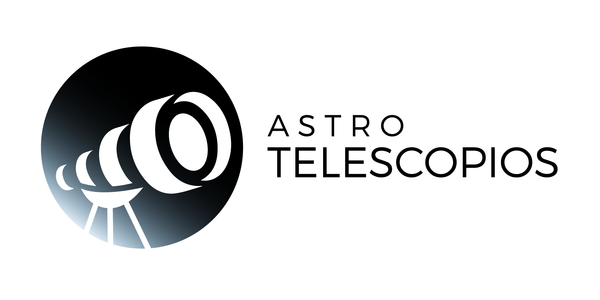
How to see the Pinwheel galaxy with a beginner telescope?
One of the most recurring questions we receive at Astro Telescopes is how to see galaxies with a beginner telescope . The simple answer is that they can be seen, but not all of them depending on the aperture of the telescope chosen.
The appropriate aperture to start seeing your first galaxies is 100mm or higher. The experience improves with higher openings.
For this article we have chosen a very popular galaxy among beginners in astronomical observation, the Pinwheel galaxy, which can be seen with telescopes with a 100mm aperture.
Everything we know about the Pinwheel galaxy
The Pinwheel galaxy, also known as M101 or NGC 5457, is a spiral galaxy located in the constellation Ursa Major.

This image shows the spiral galaxy Messier 101.Credit:NASA, ESA, CXC, SSC and STScI
8. Name "Pinwheel": The name "Pinwheel" is derived from the appearance of its spiral arms, which sometimes resemble the blades of a pinwheel.
Would you use a telescope to see the Pinwheel Galaxy?
To view the Pinwheel Galaxy (M101) successfully, it is important to choose a suitable telescope. Here are some general recommendations on what type of telescope is suitable for observing galaxies like M101:
1. Reflecting or Refracting Telescope: Both reflecting and refracting telescopes can be used to observe galaxies. Reflectors tend to be more popular due to their ability to provide larger apertures at a reasonable cost.
2. Aperture: The aperture of the telescope is crucial. The larger the aperture (the diameter of the objective or main mirror), the more light the telescope will collect and the better the observation of faint objects such as galaxies. An aperture of at least 4-6 inches (100-150 mm) is recommended for good views of M101.
Omegon's advanced range reflector telescopes are an excellent option to get started. Sold in 130 mm and 150 mm opening with equatorial mount and motorization option:
3. Stable Mount: Make sure the telescope has a stable mount. For observing cosmic objects such as galaxies, a solid mount is essential to avoid vibrations that can affect image quality.
4. Eyepieces of Different Powers: Having a variety of eyepieces of different powers will allow you to adjust the magnification according to the observing conditions and the apparent size of M101 in the sky.
5. Filters: Filters can be useful for increasing contrast when observing galaxies, especially if you are dealing with light pollution.
6. GoTo Telescope (optional): If you are new to astronomical observing, consider a telescope with a GoTo function that can help you locate celestial objects automatically. 
Astrophotography of the Molinete galaxy taken by Rebeca Fernández with Vaonis Vespera 50mm telescope
Some recommended telescopes for galaxy observing like M101 include models from trusted manufacturers such as Celestron, Omegon, and Sky-Watcher. Be sure to do additional research and ask us if you have any questions, as your specific needs and budget may influence your choice of telescope.
Find the Pinwheel Galaxy with a Telescope
Observing the Pinwheel galaxy (M101) with a beginner telescope can be an exciting experience. Here are some steps to do it:
1. Location: Find a dark place away from light pollution, such as a park or rural area, to improve sky visibility.
2. Know the date and time: Find out when M101 will be visible from your location. You can use astronomy apps or programs to obtain this information.
3. Prepare your telescope: Make sure your telescope is mounted and leveled correctly. If it is a starter telescope, it is likely a reflecting or refracting telescope.
4. Use a low-power eyepiece: Start with a low-power eyepiece (longer focal length) to have a wider field of view and make it easier to locate the galaxy.
5. Locate the constellation Ursa Major: M101 is located in the constellation Ursa Major. Look for the "seven stars" of this constellation, which are part of the famous "Ursa Major." 
6. Follow the path to Mizar and Alkaid: From the Big Dipper, follow an imaginary line from Mizar (the star in the middle of the Big Dipper's tail) to Alkaid (the star at the tip of the tail). M101 will be on this line, about a third of the way from Mizar towards Alkaid.
7. Adjust the telescope: Once you have located the approximate region, look through the telescope and adjust its position slowly until M101 appears in the field of view. You may need patience and practice.
8. Increase the power: Once you've found M101, you can switch to a higher power eyepiece to get a more detailed view of the galaxy. Please note that with higher power, the image may become dimmer.
9. Observe with patience: Take the time to observe and enjoy this beautiful spiral galaxy. Sometimes it's helpful to let your eyes adjust to the dark for a few minutes to see more details.
Remember that astronomical observing can be challenging, especially at first, but with practice and patience, you will be able to enjoy the view of the Pinwheel Galaxy through your starter telescope.
